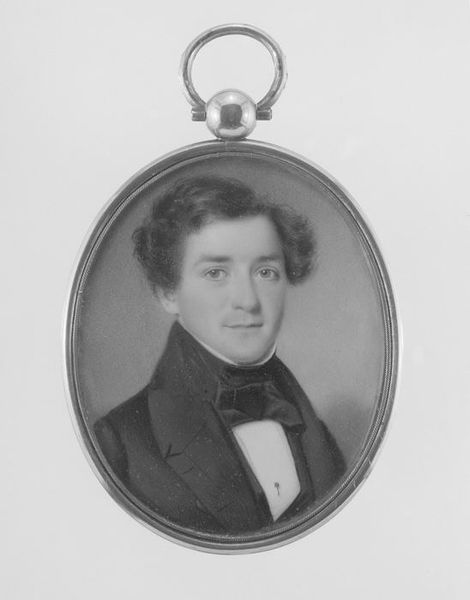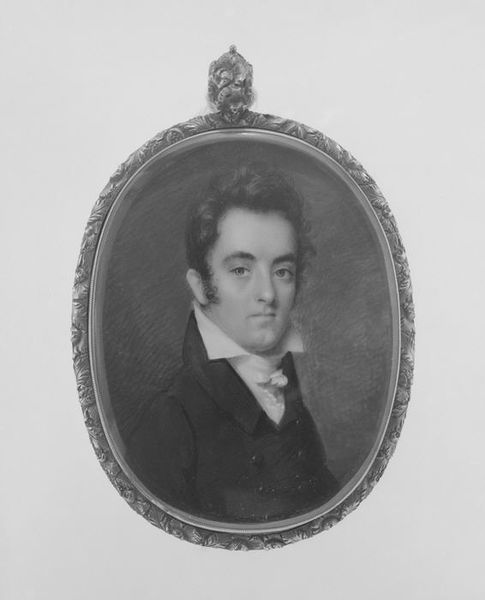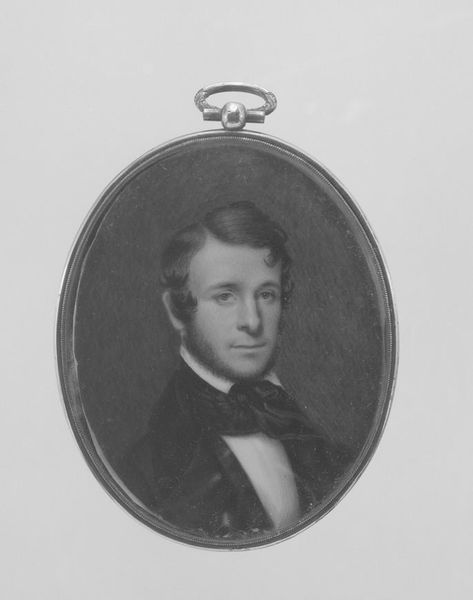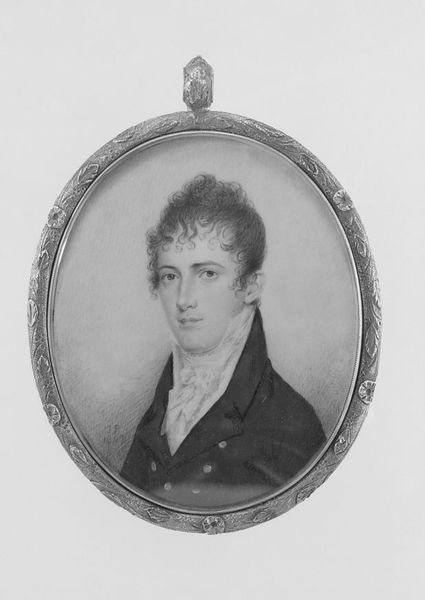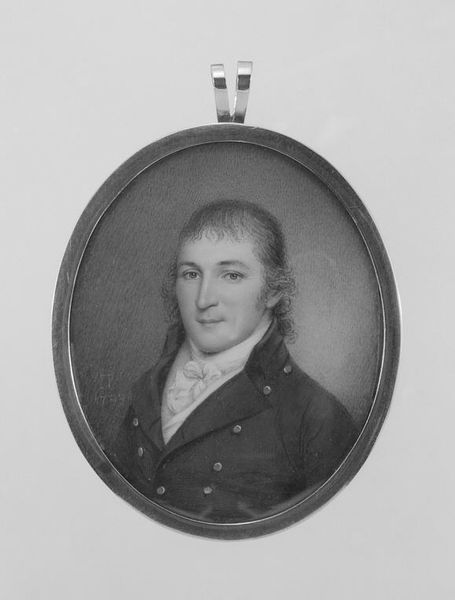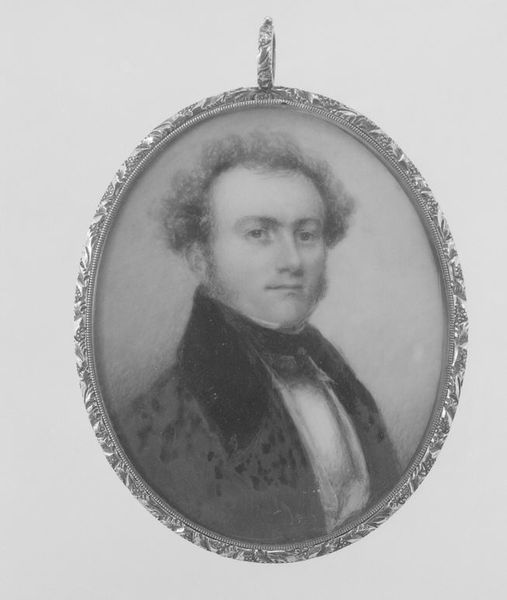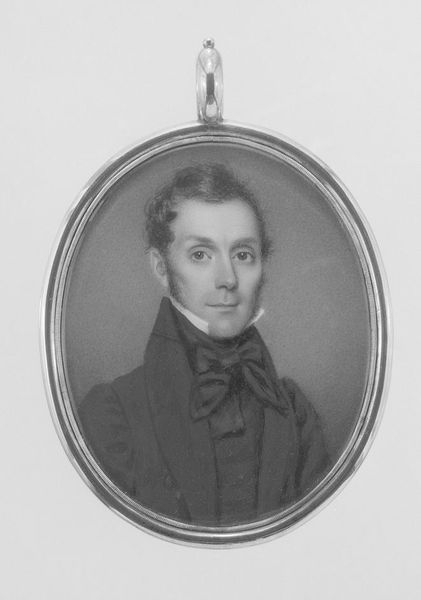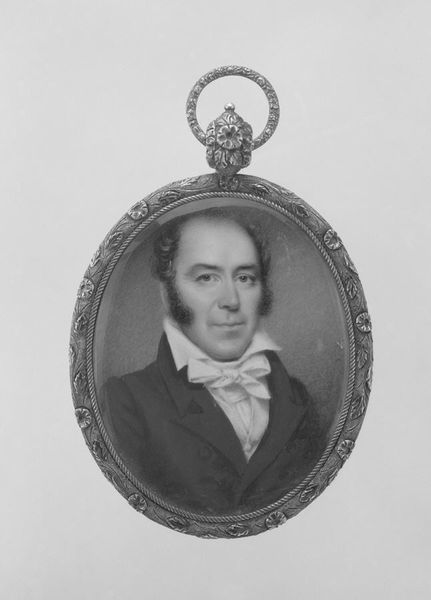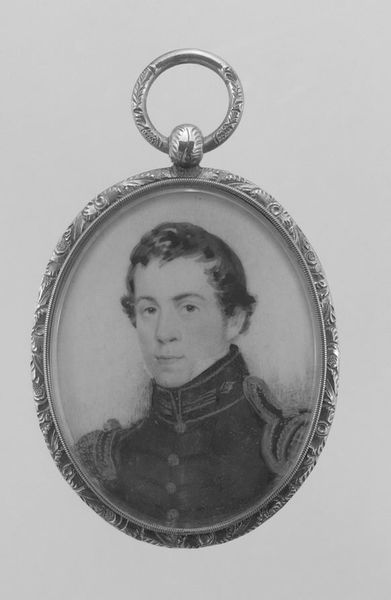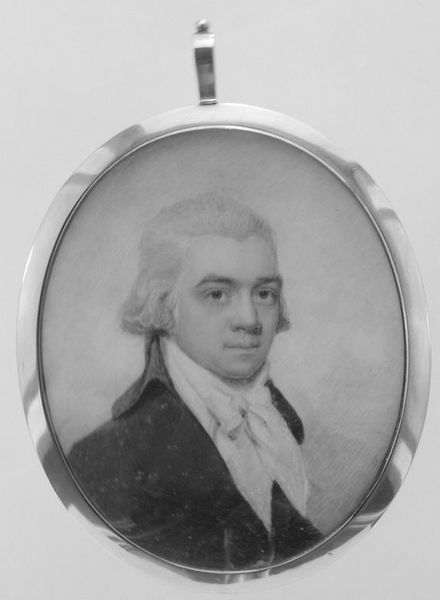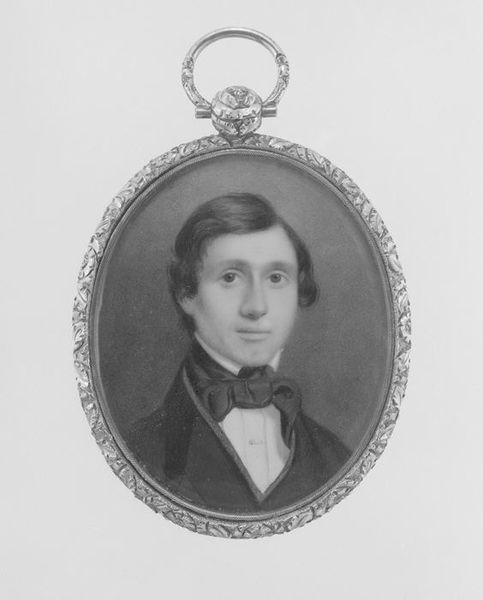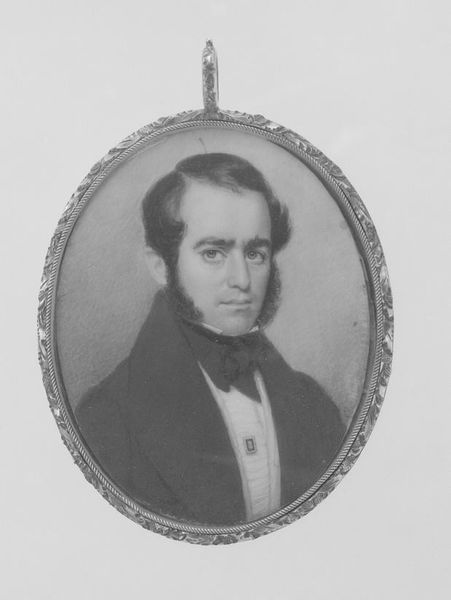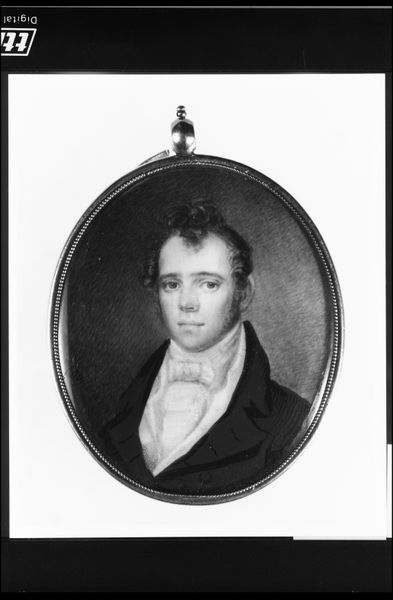
drawing, pencil
#
portrait
#
drawing
#
neoclacissism
#
framed image
#
pencil
#
miniature
Dimensions: 2 1/8 x 1 3/4 in. (5.5 x 4.4 cm)
Copyright: Public Domain
Curator: We’re looking at a portrait of a gentleman, created in 1824, and currently residing at the Metropolitan Museum of Art. It’s a drawing, primarily in pencil. What’s your initial take on it? Editor: Austere. Reserved. The almost monochromatic palette lends itself to a solemn, almost melancholy mood, wouldn’t you say? Curator: Indeed. The formal structure reinforces that. Note the tight oval composition, neatly contained within what looks like a delicately wrought frame. It perfectly exemplifies the Neoclassical focus on order and precision. Editor: And what does it mean to frame someone so deliberately? The ornamental frame traps this individual within certain societal expectations and hierarchies. This wasn't a society interested in outliers. Who might he have been? His status? His politics? Curator: The very nature of the miniature portrait speaks to status. It would have been an intimate object, possibly worn or kept close. His simple, yet elegant attire also suggests a degree of affluence. There is a quiet power displayed in his direct gaze, although I admit his youthful countenance hints at innocence. Editor: Innocence, perhaps. Or ignorance. The 1820s were a period of tremendous social upheaval. I'm curious what the portrait omits – what's unsaid about the subject's connection to those struggles, what role his social position played. Curator: Certainly, the drawing avoids overt political statements, as any respectable portrait of the era would. Look instead at the artist's technique. See how deftly he’s captured the texture of the hair, the subtle modeling of the face, using just graphite? Remarkable skill is on display. Editor: Agreed. However, skill serves ideologies. The artist, by choosing to portray him with such... restraint... contributes to an existing power structure. Does art not also have the responsibility to reveal power rather than conceal it? Curator: Well, by its adherence to accepted styles, we are better equipped to interpret his status in that precise historical and artistic context. This isn’t a rejection of that world; it's very much a part of it. Editor: I find it a poignant, perhaps even a troubling artifact. Its formality serves as a kind of barrier. A beautifully crafted one, certainly, but a barrier nonetheless. Curator: And I see in that formality an articulation of its age—a reflection of how both the artist and the sitter understood the visual rhetoric of portraiture. We are each drawn to different elements within it.
Comments
No comments
Be the first to comment and join the conversation on the ultimate creative platform.
